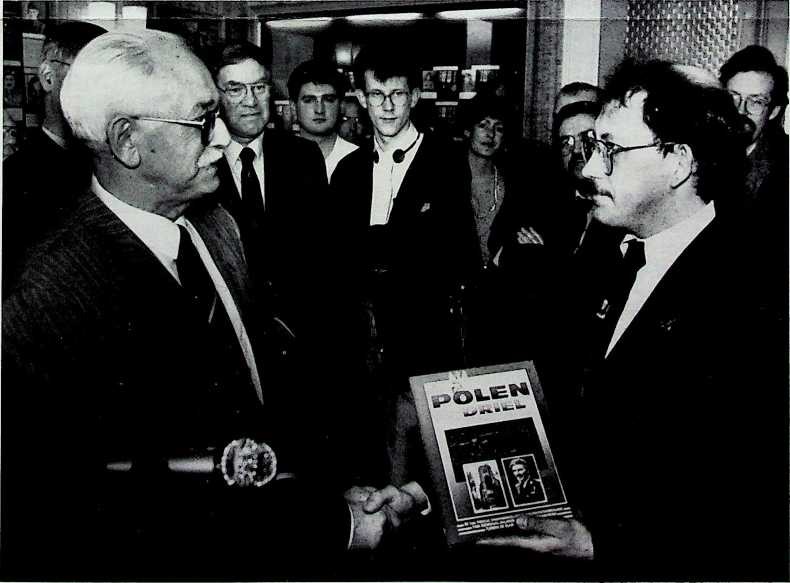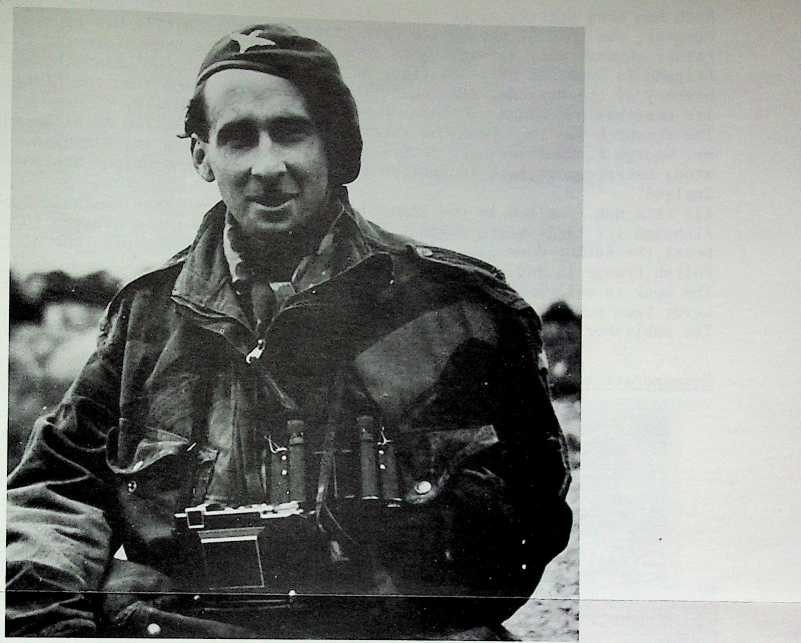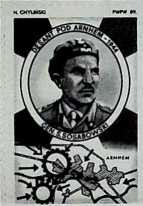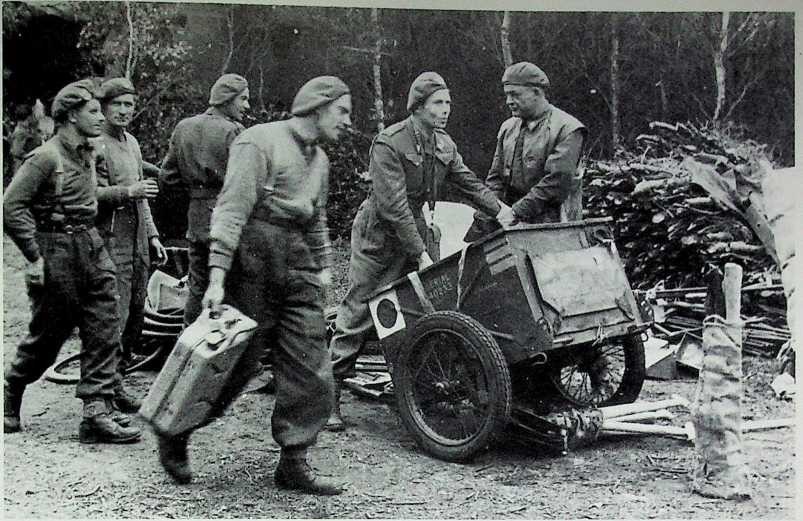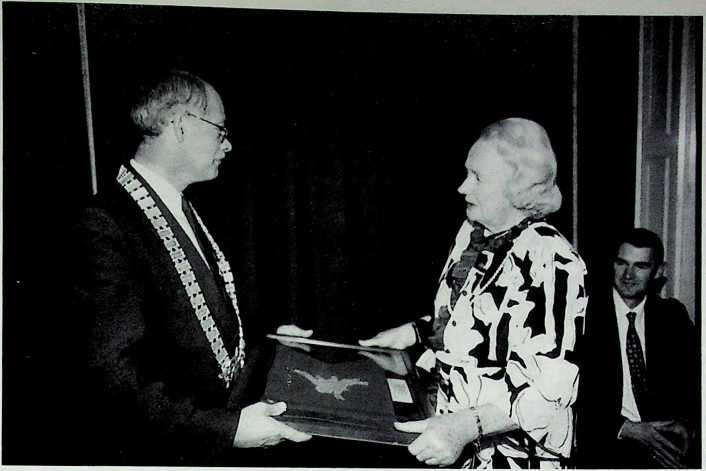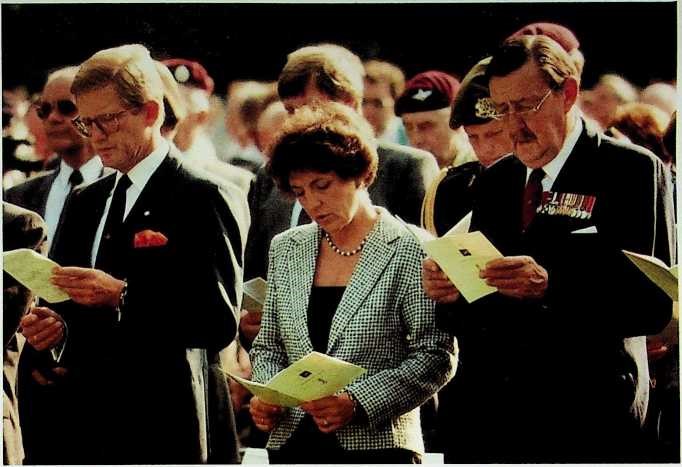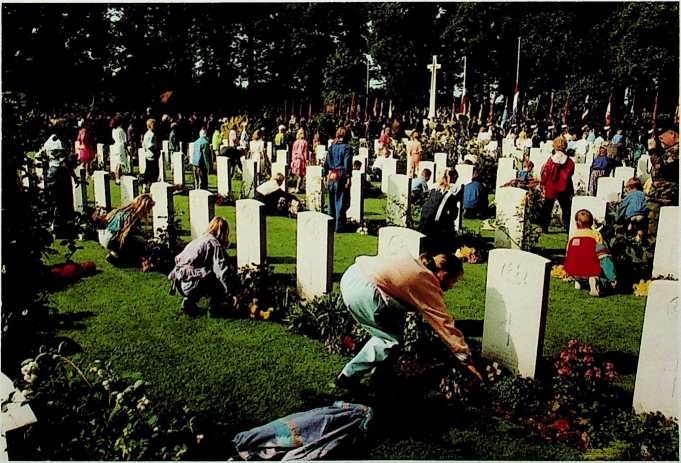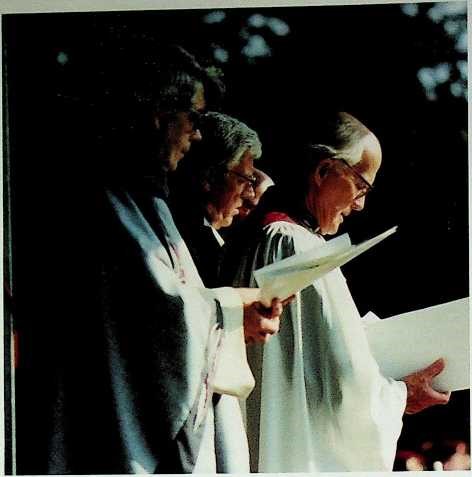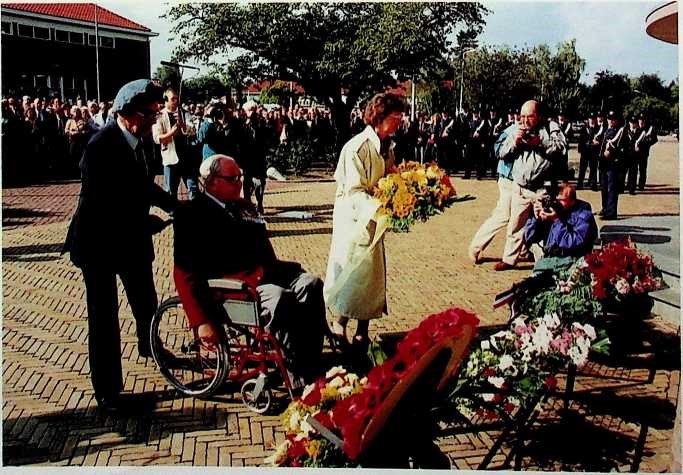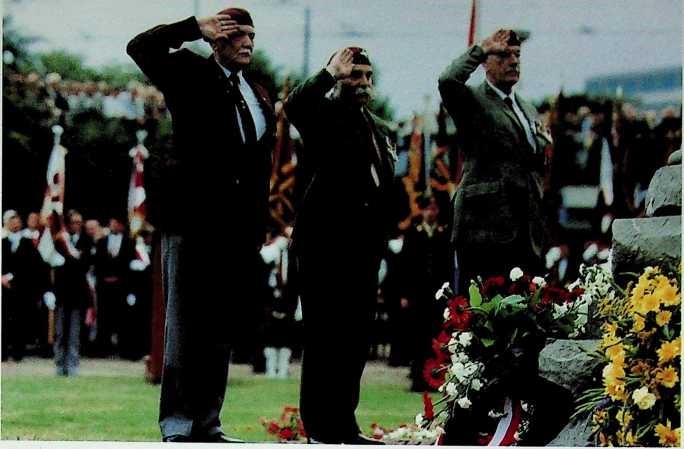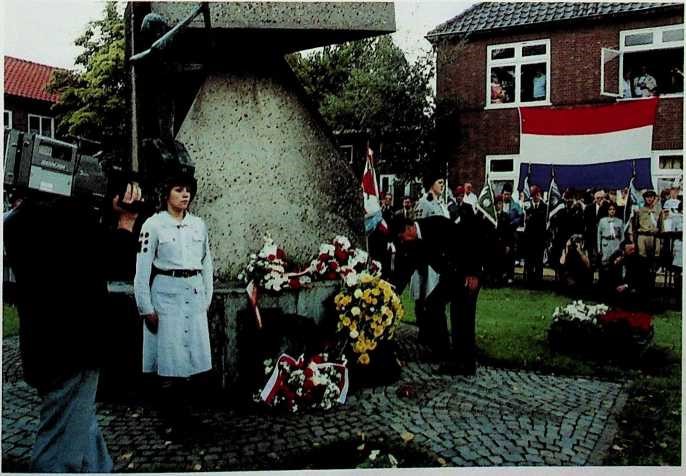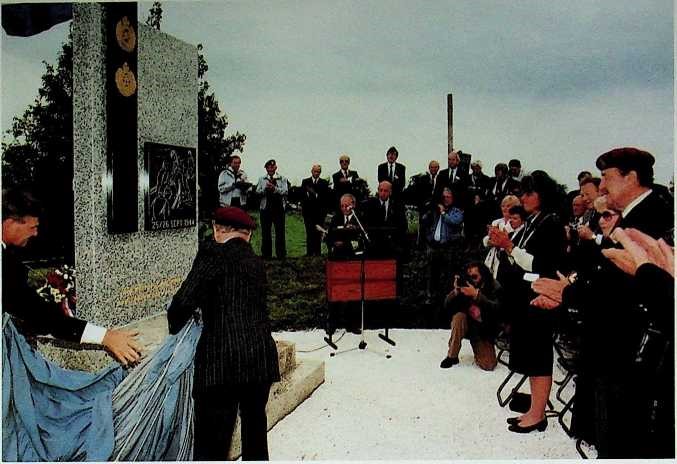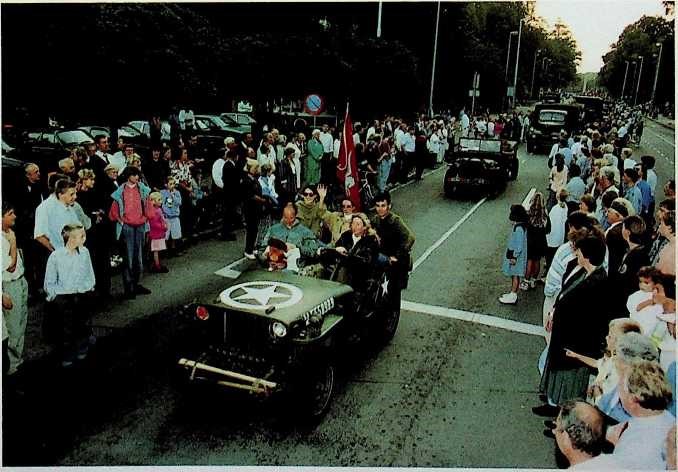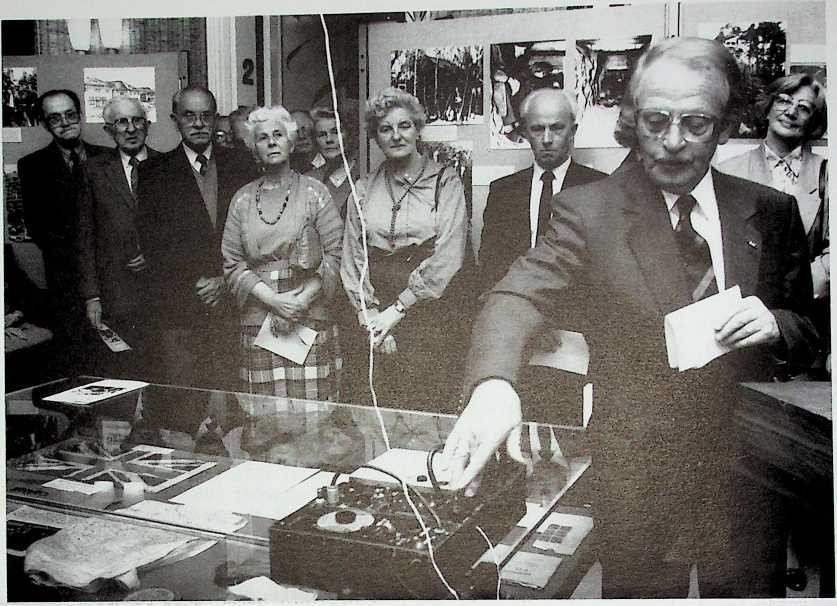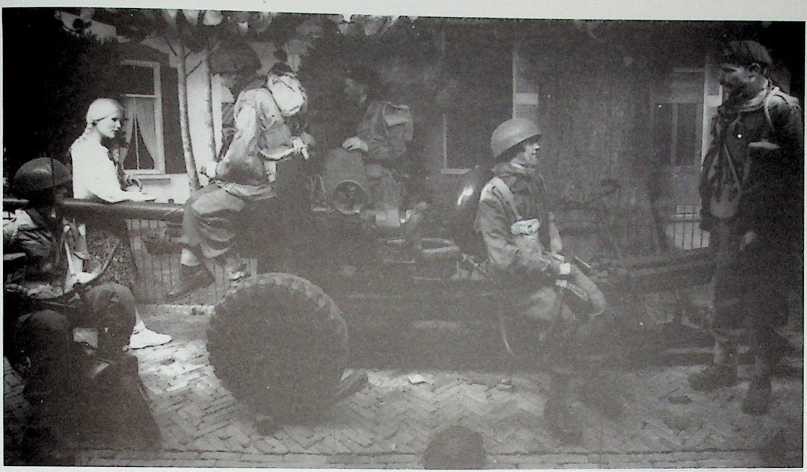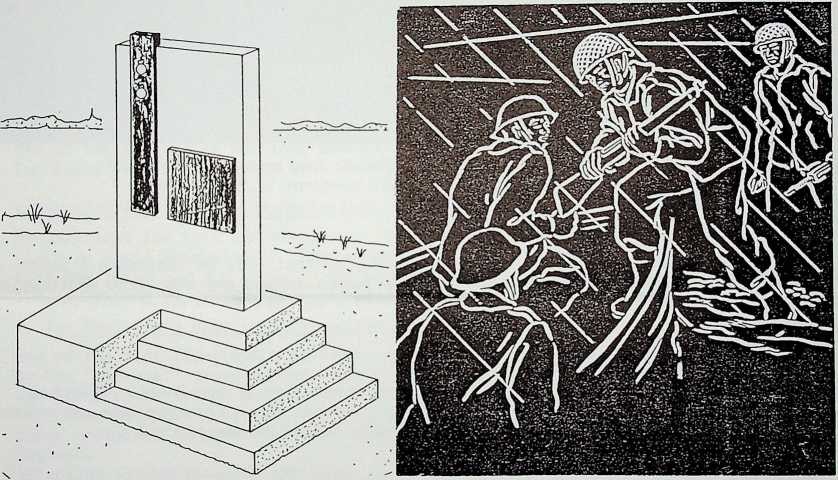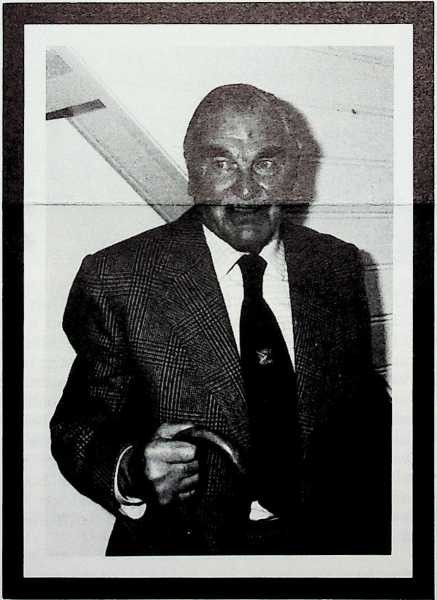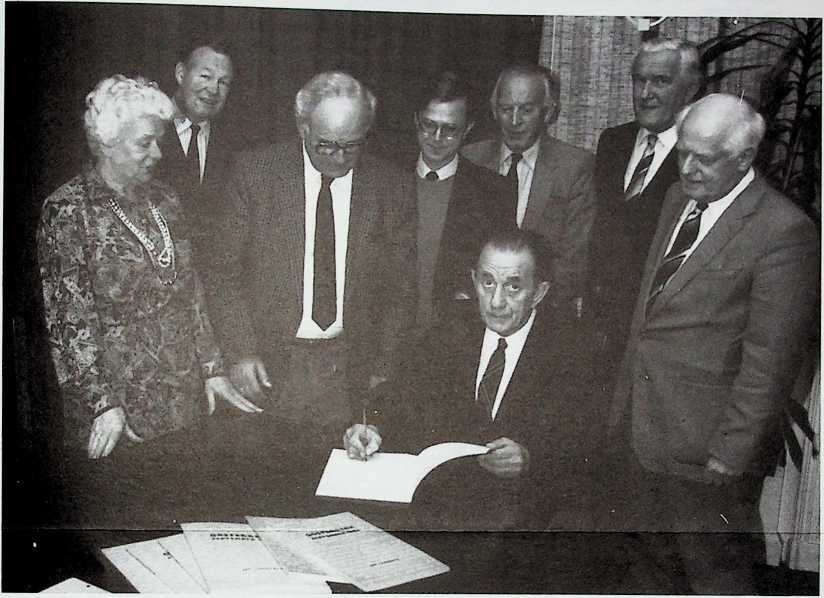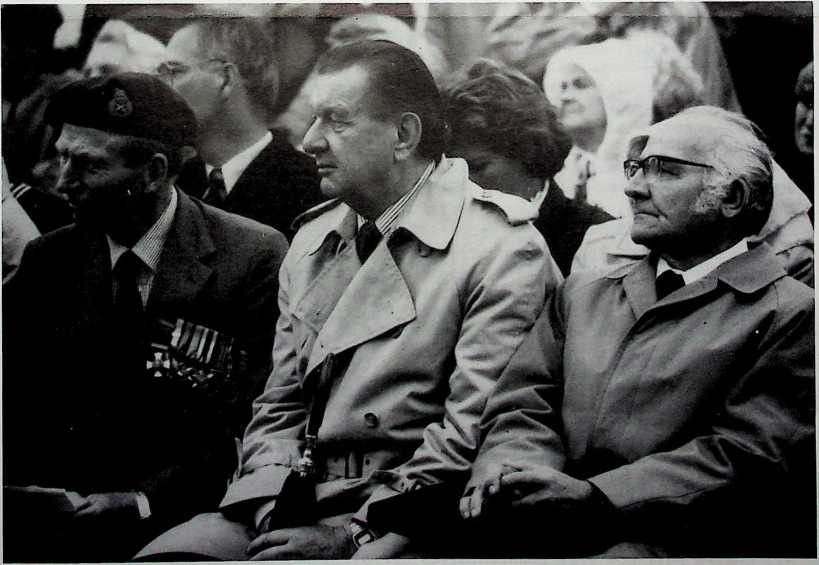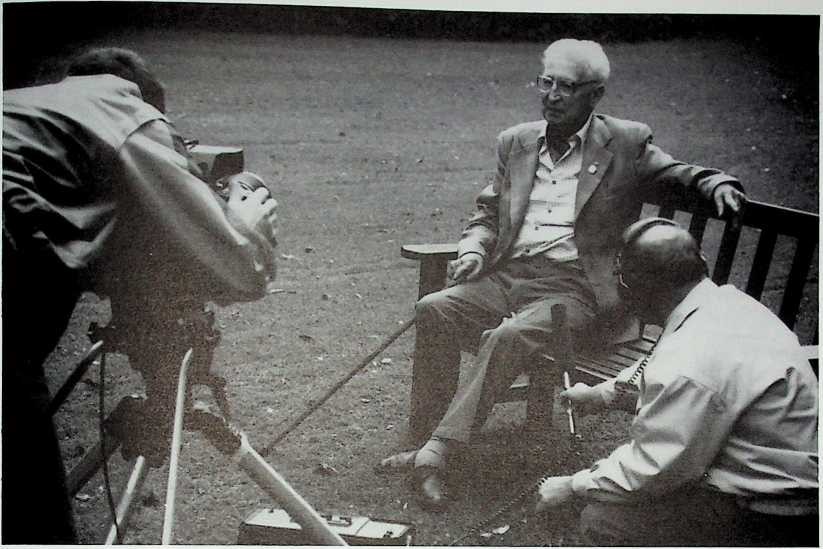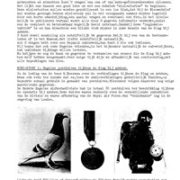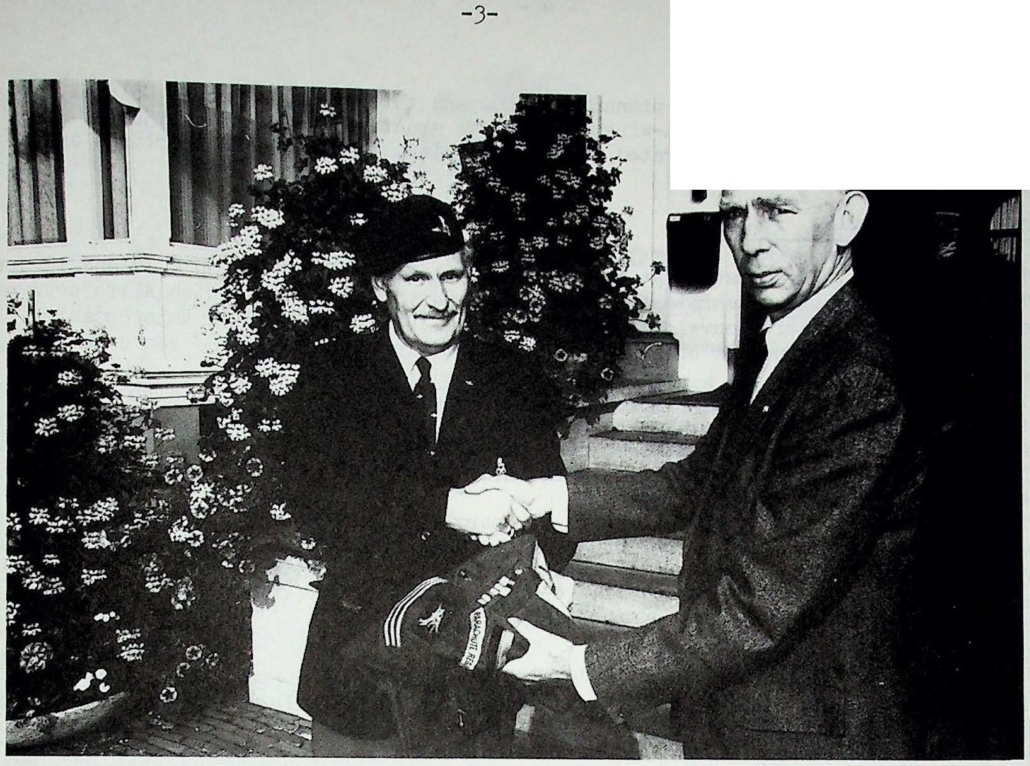SOCIETY OF FRIENDS OF THE AIRBORNE MUSEUM OOSTERBEEK
Utrechtseweg 232, 6862 AZ OOSTERBEEK, the Netherlands
Representative in Great Britain: Mr. F.Young,
6, Kildow Gardens,Cliftonville,Kent CT 9 3 EG
Editor:Drs.R.P.G.A.Voskuil
Translation:Mrs.A.Meeuwsen
10th Anniversary Excursion – a great success.
More than 200 people took part in the special excursion on June 10th,on the occasion of the 10 th Anniversary of our Society. The group assembled on the Rijnkade at Arnhem,where they were welcomed with coffee.From there they walked to the BASF building near the bridge. From the top floor of this building one has _a very good view of the bridge and its surroundings.Here Mr.Drs.P.R.A.van Iddekinge,who is the archivist of Arnhem municipality,talked about the events
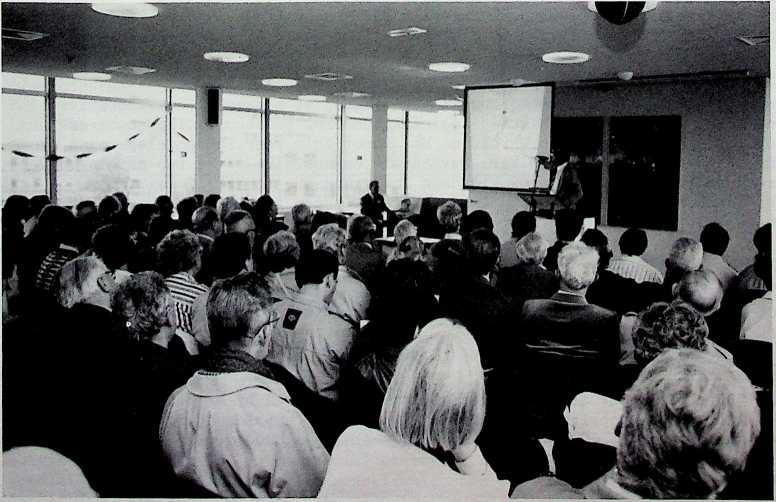
10th Anniversary excursion. Participants listen attentively to Mr.Drs. P.R.A. van Iddekinge who talks about the fighting which took place around the bridge at Arnhem in September 1944. (Photo:B.de Reus).
in this area in September 1944,and the consequences they had for the civilian population.
Then followed a walk around the Northern ascent of the bridge.Messrs. van Roekel, Luursema and Voskuil supplied further Information at the most important points.
Af ter this walk followed the boat-trip. Lunch was served while the boat was slowly prepairing for the journey and then the well-known views of Arnhem and Ooster beek came into sight,this time seen from the water.
As every participant had been provided with a very extensive excursion guide, Mr. van Roekel had only to indicate which point had been reached and which page of the guide gave further Information.So everyone knew exactly where one was and what had happened at that special point. This proved to be a very good system to inform a large group of people who by this time had spread all over the boat. The trip lasted for four hours and took the passengers to Wageningen and back to. Arnhem.The weather was good and everybody was very enthusiastic about this novel way of combining pleasure with the obtaining of a mass of detailed Infor¬mation.
Mr.van Roekel deserves a special word of thanks for the way he organized the trip and led the party to Wageningen and back!
Pilgrimage 1990.
The Commemoration of the Battle of Arnhem will this year take place from Septem¬ber 17th till 22nd. As always,you will find the programme for the events with this Newsletter.
General Sir John W.Hackett will be this year’s leader of the Pilgrimage.
Colonel Wilhelm leaves the Airborne Museum.
The Director of the Airborne Museum,Colonel C.Wilhelm,has retired from his post on July Ist. During the ten years of his directorship the Museum and its collection have grown considerably.
Mr.Wilhelm is a man who prefers to work behind the scenes,he does not like to be in the limelight. The Museum is very much indebted to him and is sorry to see him leave.
It has been decided not to appoint a new director.This task will be filled by Mr. de Reus,who has been the curator of the Museum since 1978.He will be assisted by Mr. Drs. A.Groeneweg.who is a member of the Board of Trustees of the Museum.
Polish Commemorative envelope.
In our last Newsletter we announced the arrival of a special commemorative envelope. It has a Polish stamp depicting General Sosabowski.The numbered envelopes were stamped in Warsaw on May 8th of this year.The envelope also shows the Standard of the Polish Para Brigade in colour. The first two envelopes were presented to General Sosabowski’s son and grandson.
The interest in this envelope is very great.lt can be bought at the Museum and costs f5,- .
Excursion-guide.
There are still some copies obtainable of the extensive excursion-guide which was issued for the boat excursion on June lOth.They can be bought at the Museum and cost ƒ5,-.
“Roll of Honour”.
The “Roll of Honour of the Battle of Arnhem”,compiled by Mr.J.A Hey is sold out and will not be reprinted in the near future.The “Supplement to the First and Sécond Edition” of 1989 can still be bought at the Museum.
Schools-project.
This year again the interest in the schools-project proves to be verv larae Since January Ist of this year about 3.000 pupils of different schools have’
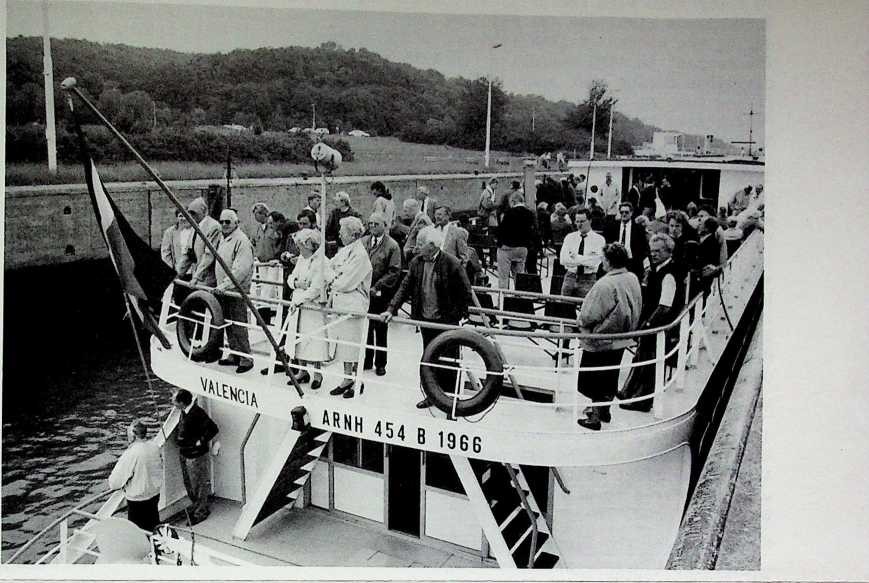
The boat-trip : passing through the locks at Driel.
participated in this project which aims at promoting an interest in the Battle of Arnhem with the younger/youngest generation.
Exhibition.
The AMRO Bank on the Utrechtseweg in Oosterbeek will show a small exhibition of photographs and material about the Battle of Arnhem, from August 25th till October Ist. This exhibition will be arranged by our Oosterbeek member, Mr. Luuk Buist.
Book “De oogst van tien jaar/The Harvest of ten years”.
This book,which was issued in 1988 on the occasion of”ten years Airborne Museum in Hartenstein House” has been reduced in price and now cost ƒ 17,50.
The book contains seven original diaries from people who were involved in the Battle of Arnhem in September 1944.
One story, the diary of the resistance fighter Mr. C.B.Labouchère, is in Dutch, the other six are in English.These are from the hands of Brigadier G.Lathbury, Colonel Graeme Warrack,Major lan Toler.Flying Officer R.Lawton.G.W.Jukes and Alan Wood.
The book contains a number of original photographs and can be bought at the Museum.
Appeal I.
A British company is planning to make a feature film about the aftermath of the Battle of Arnhem.lt will give special attention to the help given by the Dutch population to Allied military personnel which had remained behind after the Battle.The film will pay much attention to the escape operations “Pegasus I and II” and the “Crossings” through the Biesbosch.
In connection with the preparations for this film,the company wants to contact Netherlands civilians who did come into contact with hidden Allied personnel during the winter of 1944/1945 and who are prepaired to tell their story.
The company is also searching for Allied personnel who were kept hidden by Dutch civilians during that period.
If you want to contribute your story,please contact Mr. K.Ryninks.SCORPIO Film Productions Ltd, 39 St.James’s Lane.London N10 3DA,England.Tel.081-4446311. Netherlands civilians can write in Dutch to Mr. Ryninks.
Appeal II.
Mr. G.H.Maassen from Oosterbeek is planning to write a Ministory about the French Renault tanks which were launched by the Germans in the Western part of the Perimeter in September 1944. Several of the tanks which were put out of action by the British were still there in 1945, for instance on the Westerbouwing,on the van Borsselenweg,on the Utrechtseweg opposite the Koude Herberg,and on the Sonnen- berglaan. It is still not clear which German unit had been equipped with these tanks and on which date they were brought into action.
Any information(archives.museums,literature eet.) is very welcome.Please contact Mr. G.H.Maassen,Jan van Riebeeckweg 82,6861 BH Oosterbeek. Tel. 085-337515 or 085-348303 :office.
Reprint of “Remember Arnhem.”
John Fairley’s book “Remember Arnhem” was first published in 1978.It describes the experiences of the Ist Airborne Reconnaissance Squadron during the Battle of Arnhem.The first edition was sold out very quickly,which was no surprise as it was considered to be one of the best books about the Battle. Now a reprint has been published. The price is ƒ 50,- .
Exposition at the “Westerbouwing”.
The Westerbouwing restaurant will show an exposition of material relating to the Battle of Arnhem,from September 17th till 26th. This material was collected during the last few years on the former battlefields by Messrs.Harry Leydecker,Hans van de Velden and Marco Pankow.
AIRBORNE- and PEGASUS Walking-tours.
The 44th Airborne one-day walking-tour will be held in Oosterbeek on Saturday, September Ist. This walking-tour attracts the largest number of participants in Europe and its route includes many points which were involved in the Battle of Arnhem.One of its aims is to keep alive the memory of this Battle. Information can be obtained from”Politie Sport Vereniging Renkum”,v,d.Molenallee 8,6865 Doorwerth, tel. 085-337960.
Another one-day walking-tour,the 7th Pegasus tour,will be held on October 20th.
It commemorates the historie escape operations across the Rhine by people who had been left behind after the Battle of Arnhem:soldiers,pilots and resistance fighters,during October 1944.The tour starts from Café Floor at Lunteren.Infor¬mation from :Streek VVV,Achterdoelen 36,Postbus 80.12,6710 AA Ede Telephone- 08380-14444.
Camera-man Gordon “Jock” Walker in diorama.
In our last Newsletter we wrote about the donation of a Zeiss Super Ikonta camera to the Museum.The plans regarding the placing of a figure representing the camera-man Gordon “Jock” Walker,together with the camera,in the diorama, have now been completed.
Airborne momument for Wolfheze.
Many inhabitants of Wolfheze have for a long time harboured the wish to erect an Airborne monument in their village.
On September 17th,1944.Wolfheze was hit by a heavy bombardment,the prelude to the Battle of Arnhem.Ninety persons were killed that morning. Some hours later the first airlandings took place on the farmlands West of Wolfheze.
Two years ago the wish for a monument was given new life by the members of the Committee Airborne Memorial”.The inhabitants donated the sum of ƒ 6 000 and plans got underway.We have now been informed that Wolfheze will very soon have its own monument.

